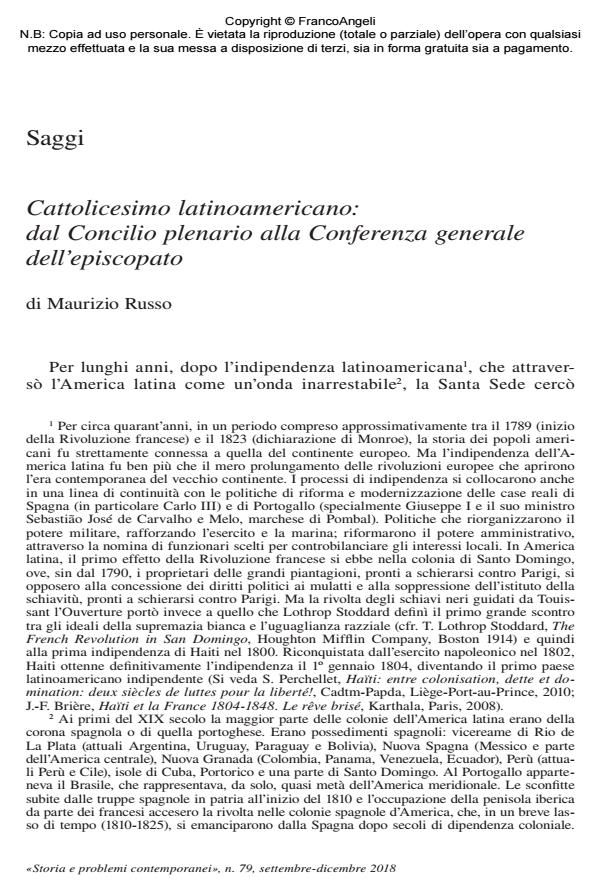From the Latin American Plenary Council at the General Conference of the Latin American Episcopate
Journal title STORIA E PROBLEMI CONTEMPORANEI
Author/s Maurizio Russo
Publishing Year 2019 Issue 2018/79
Language Italian Pages 33 P. 9-41 File size 212 KB
DOI 10.3280/SPC2018-079002
DOI is like a bar code for intellectual property: to have more infomation
click here
Below, you can see the article first page
If you want to buy this article in PDF format, you can do it, following the instructions to buy download credits

FrancoAngeli is member of Publishers International Linking Association, Inc (PILA), a not-for-profit association which run the CrossRef service enabling links to and from online scholarly content.
For many years, after Latin American independence, the Holy See has tried to structure their relationship with the Churches of this vast geographical area. Two key events marked this tortuous journey; they were the fruit of the ecclesial vision of two charismatic Popes: Leo XIII and Pius XII. From May 28 to July 9 of 1899, Leo XIII assembled in Rome the Latin American ecclesiastical hierarchy in a plenary council, displaying his interest for this continent. This assembly was the child of the Leonine ecclesial vision and opened a new phase in the history of the Church. From 25 July to 4 August of 1955, the first General Conference of the Latin American Episcopate took place in Rio de Janeiro. Convened by Pius XII, it was of great importance for the mark that it left on the history of the American continent and of the Catholic Church. It was the point of arrival of the problematic construction of a relationship between Rome and the Latin American ecclesial realities. An important fruit of this experience was the creation, inspired by Pope Pius XII, of the Latin American Episcopal Council (Celam).
Maurizio Russo, Cattolicesimo latinoamericano: dal Concilio plenario alla Conferenza generale dell’episcopato in "STORIA E PROBLEMI CONTEMPORANEI" 79/2018, pp 9-41, DOI: 10.3280/SPC2018-079002